Reviews
Zoo
Peter Greenaway
UK, 1985
Credits
Review by Leo Goldsmith
Posted on 13 January 2010
Source Fox Lorber DVD
Categories Peter Greenaway, Sacha Vierny, Michael Nyman, Ben van Os and Jan Roelfs
Zoological taxonomies and alphabetical structures are recurrent preoccupations in Peter Greenaway’s work, but it is in A Zed & Two Noughts that they find their first full, obsessive expression. With typically exacting detail and symmetry, Greenaway combines these twin obsessions even in the film’s title, which is itself a wordgame of alphanumeric substitution (or what is now known as a “leet,” a term which derives from the word “elite”). Extending the organizational neurosis of his prior work to the animal kingdom, the titular zoo serves as the setting for a typically violent and perverse struggle to catalog and comprehend nature itself.
Zoos are, after all, places in which man’s desire for mastery over the natural world is staged in a process of collection, preservation, and observation. The first zoos were imperial trophy chests, displays of the zoological spoils of a country’s or a ruler’s conquests and usurpations throughout the world, and even today’s zoos maintain that sense of dominance, albeit for a more ostensibly scientific purpose. In zoos, as John Berger notes in his rather dour essay “Why Look at Animals?”
animals are always the observed. The fact that they can observe us has lost all significance. They are objects of our ever-extending knowledge. What we know about them is an index of our power, and thus an index of what separates us from them. The more we know, the further away we are.
In Greenaway’s film, characters apply to animals all of their most violent and arbitrary taxonomies in an effort to gain this knowledge, this distance. Traumatized by a freak car accident (involving a Ford Mercury and a swan) that has claimed the lives of both of their wives, brothers and fellow zoologists Oswald and Oliver Deuce set about grieving by undertaking a thorough investigation of nature’s evolutionary process. But their interest is not so much the creation of life, but the evolution of death—the speeds at which animals decay, and the basic stew of carbon and dust they return to. An apple, a prawn, a fish, a crocodile, a swan, a Dalmatian, a gorilla, a zebra: each finds its way into the frame of their time-lapse camera, star specimens in their study - and Greenaway’s - of the stages and aesthetics of putrefaction. “Between us, we know everything,” the Deuce Brothers declare, believing that their exacting scientific method will take them to the very root of death and its original mystery.
The symmetrically framed laboratory set-up of A Zed & Two Noughts is, therefore, a literal stage for the filmmaker’s blurring of aesthetic and scientific documentation, of art and natural history. It provides Greenaway with the pretext to exercise his own fondness for lists and enumerations, grids and tables, and other quasi-objective, pseudo-scientific organizations of data. This tendency is both anti-narrative and anal-retentive, rejecting the conventions of film plotting and characterization in favor of visual and conceptual order. But it also just barely obscures the director’s whimsy. After all, even zoological classifications are to a degree arbitrary, and Greenaway uses their specifications to encompass wide ranges of items. In the opening sequence alone, the striped patterning of the zebra is repeated in a dozen iterations: venetian blinds, the bars of an animal’s cage, flowing police tape, tigers (a real one, and one in an ESSO billboard advertisement), even the flicker of film itself. With this expansion of classification comes a flagrant disregard for science’s more practical application, grouping objects and entities by aesthetics rather than nature.
This preeminence of aesthetics over nature is enacted in the film when the brothers meet Alba Bewick, a woman injured in their wives’ car accident whose leg must be amputated. Her physical vulnerability makes her the easy victim of physical manipulation by her surgeon, who poses her in reenactments of paintings by Vermeer, before recommending she amputate her other leg in order to correct the asymmetry. Everywhere, human notions of order are mapped onto the world like screens or frames, and in the surgeon’s project Greenaway establishes a contrast with the brothers’ supposedly more objective films about decay. The human body can be manipulated by the surgeon to fit grand aesthetic ideals, and time itself can be bent in the brothers’ study of nature’s whims.
But for Greenaway, one of the primary weapons humans wield in the fight against the unknowable and unclassifiable is language. In Z00, as in his early short H is for House, he uses playful alphabetical sequence, in the guise of a child’s learning game, to structure the film’s events. Unifying this theme with that of zoological taxonomy and enumeration, Alba’s child Beta learns the alphabet letter by letter over the course of the film by naming animals (“A is for?” “Angel fish.” “B is for?” “Butterfly.”) In this regard, his film shares its fascination with the alphabet and the structure of wordgames with the work of Hollis Frampton, particularly his structuralist document of alphabet iconography, Zorns Lemma.
But Greenaway has his own wordgames as well, with typography and visual clues sprinkling leads and red herrings throughout. In one instance, one brother contemplatively picks up a stuffed zebra while the other an apple, suggesting that they are interested in the reverse order of the conventional enumeration - Z to A - the undoing and not the formation of the world. There are also myriad references to other related fields of esoterica: astrological signs (Mercury, Venus, Gemini); the Dutch painter Vermeer and his master-forger Han van Meegeren; the authoritative style of the educational documentary, a medium in which Greenaway himself cut his teeth as a filmmaker.
As with many of the director’s early works, this emphasis on form often seems at odds with or at the expense of the diegesis. Greenaway, as he has attested in interviews, is simply not interested in the quasi-literary basis of conventional narrative cinema, but favors the structural and conceptual puzzles the medium allows him to explore. Nonetheless, his home country (and his sometime collaboration with the UK’s Channel Four) avail to him a typically impressive group of British theatrical actors: Frances Barber, as the licentious Venus de Milo; Joss Ackland, as a sinister, black-clad zookeeper who supplies the zoo’s black market,; and Geoffrey Palmer, as a rather characteristically disinterested zoo manager. (Even the documentary on life that the Deuce brothers study is narrated, appropriately enough, by Richard Attenborough.) While French actress Andréa Ferréol’s portrayal of Alba seems to strain somewhat under the weight of Greenaway’s verbose script and bizarre character quirks, Brian and Eric Deacon inhabit their roles as the Deuce brothers with such weirdly prim idiosyncrasies that we don’t realize until very late in the film that they are - in real life and in the film - identical twins.
The themes of twinning, copying, and creating symmetry - in nature and in art - become increasingly emblematic of the ways in which the Deuce Brothers seek to understand and master nature. For ultimately, the question Oliver and Oswald Deuce are striving to answer is one of the existence and agency of the divine: how Nature can be upended in a moment for the execution of an “Act of God.” The godlike mastery they seek is therefore as much the hubris of the artist as of the scientist. Indeed, the film was in part inspired by a photograph, used in Greenaway’s film The Falls, of puppet-animators the Quay Brothers, whose process of stop-motion animation has likened to the cinematic manipulation of time in the Deuces’ time-lapse photography. Cinema, for them as for Greenaway, becomes a means to conquer time, to slow death’s inexorable creep to a speed at which it can be observed and itemized.
More Peter Greenaway, Sacha Vierny, Michael Nyman, Ben van Os and Jan Roelfs
-
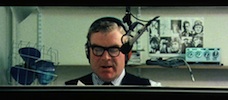
The Falls
1980 -
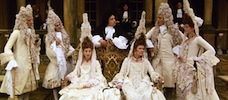
The Draughtsman’s Contract
1982 -
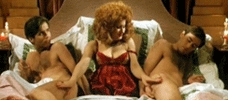
A Zed & Two Noughts
1985 -
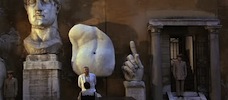
The Belly of an Architect
1987 -
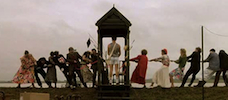
Drowning by Numbers
1988 -
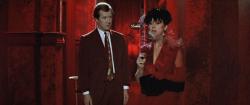
The Cook, the Thief, His Wife & Her Lover
1989 -
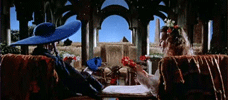
Prospero’s Books
1991 -
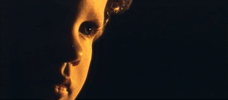
The Baby of Mâcon
1993
We don’t do comments anymore, but you may contact us here or find us on Twitter or Facebook.



